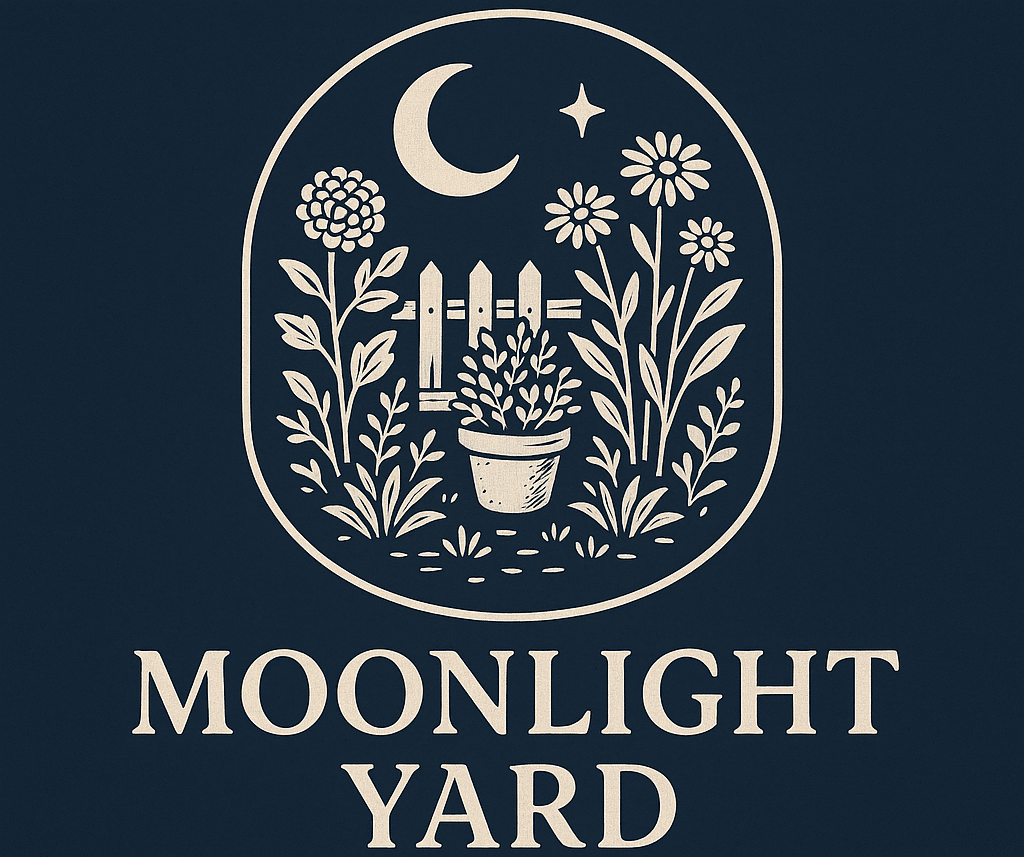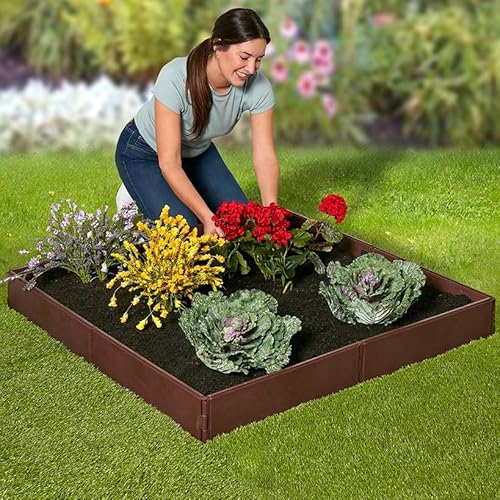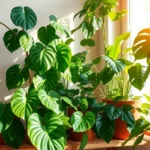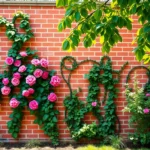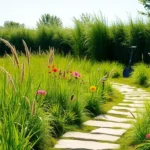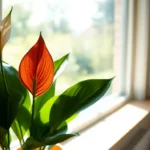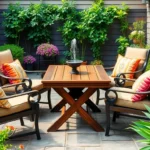We’ve all dreamed of creating that perfect flower garden – a vibrant oasis that transforms our outdoor space into something truly magical. Whether you’re working with a sprawling backyard or a cozy corner plot, the right flower garden ideas can turn your vision into reality while boosting your home’s curb appeal and property value.
The beauty of flower gardening lies in its endless possibilities. From cottage-style wildflower meadows to structured formal borders, there’s a design approach that’ll match your personal style and growing conditions. We’ll explore creative layouts, seasonal planting strategies, and low-maintenance options that deliver maximum impact with minimal effort.
Ready to dig into the industry of spectacular flower gardens? We’re sharing proven ideas that work for beginners and seasoned gardeners alike, helping you create outdoor spaces that bloom with color and personality throughout the growing season.
Create a Cottage Garden Style With Mixed Perennials and Annuals
Cottage gardens bring timeless charm to any outdoor space with their relaxed, romantic appeal. We’ll show you how to achieve this beloved style by combining sturdy perennials with colorful annuals.
Choose Traditional Cottage Flowers Like Hollyhocks and Delphiniums
Traditional cottage flowers form the backbone of this classic garden style. Hollyhocks create dramatic vertical interest with their towering spikes reaching 6-8 feet tall in shades of pink, white, purple, and yellow. Delphiniums add stunning blue towers that complement hollyhocks perfectly while attracting beneficial pollinators to your space.
Sweet peas climb gracefully on trellises or fences, producing fragrant blooms in soft pastels throughout summer. Foxgloves provide elegant spires in purple, white, and pink that thrive in partial shade areas. Canterbury bells offer bell-shaped flowers in blue, pink, and white that bloom for months when deadheaded regularly.
Peonies anchor your cottage garden with their massive, fragrant blooms in late spring. Roses, particularly climbing or rambling varieties, create the quintessential cottage garden focal point. Old-fashioned varieties like ‘Zephirine Drouhin’ or ‘New Dawn’ bloom repeatedly and handle various growing conditions.
Mix Heights and Textures for Natural Appeal
Layering different plant heights creates the signature cottage garden look that appears effortlessly abundant. Tall background plants like sunflowers, cosmos, and cleome reach 4-6 feet and provide structure. Mid-height flowers such as catmint, salvia, and black-eyed Susan fill the middle layer at 2-3 feet tall.
Ground-covering plants like creeping phlox, sweet alyssum, and ajuga carpet the front borders. Ornamental grasses such as fountain grass and feather reed grass add movement and texture contrast. Their wispy seed heads catch sunlight and create visual interest even after flowers fade.
Foliage plants with different textures enhance the natural cottage garden appeal. Lamb’s ear provides silvery, fuzzy leaves that highlight bright flower colors. Hostas offer broad, architectural leaves in shaded areas. Ferns add delicate, lacy texture that softens bold flower displays.
Include Fragrant Herbs Between Flower Plantings
Fragrant herbs scattered throughout your cottage garden create sensory appeal while serving practical purposes. Lavender borders walkways with its purple spikes and calming scent that repels pests naturally. Rosemary bushes provide year-round structure with their needle-like foliage and blue flowers.
Thyme creeps between stepping stones, releasing fragrance when walked upon. Mint varieties like spearmint and chocolate mint fill gaps with their spreading habit and aromatic leaves. Sage offers silvery foliage and purple flower spikes that complement traditional cottage flowers beautifully.
Chamomile carpets pathways with tiny daisy-like flowers that smell like apples when crushed. Oregano produces clusters of small pink or white flowers while providing culinary herbs for your kitchen. Basil varieties such as purple ruffles and lemon basil add colorful foliage and distinct fragrances to your cottage garden mix.
Design a Color-Themed Garden Layout

Creating gardens with exact color palettes transforms your flower beds into stunning visual experiences that complement your cottage garden’s natural charm. We’ll explore three distinct approaches that use strategic color combinations to achieve different moods and atmospheres.
Plan a Monochromatic White Garden for Elegance
Monochromatic white gardens focus on a single color while varying shades and textures to create harmonious, sophisticated spaces. Moonflower (Ipomoea alba) provides dramatic nighttime blooms that open as evening approaches. Night-blooming jasmine (Cestrum nocturnum) adds intense fragrance during twilight hours. Evening stock (Matthiola incana) contributes delicate texture and sweet scent throughout the growing season.
White flowers, foliage, and decorative elements maintain visual cohesion across your garden design. Silvery artemisia and dusty miller create stunning backdrop textures. White roses, gardenias, and peonies add varying bloom sizes and seasonal interest.
Consider incorporating white garden accessories like painted trellises, light-colored mulch, and pale stone pathways to reinforce your elegant theme.
Create a Warm Sunset Garden With Reds, Oranges, and Yellows
Warm sunset gardens use vibrant colors to evoke energy and create inviting outdoor spaces. Marigolds provide continuous yellow blooms from spring through fall frost. Nasturtiums offer brilliant orange flowers with edible petals that attract beneficial insects. Red dahlias or roses serve as stunning focal points with their bold, dramatic presence.
Mix varying plant heights and textures to add visual depth and maintain year-round interest. Tall sunflowers create impressive backdrops behind medium-height zinnias. Low-growing calendulas fill front borders with cheerful orange and yellow faces.
Orange marigolds, red salvias, and yellow coreopsis bloom simultaneously during peak summer months. Copper-colored heuchera foliage extends warm tones into shaded garden areas.
Develop a Cool Blue and Purple Retreat Space
Cool blue and purple gardens create calming atmospheres perfect for relaxation and meditation spaces. Bluebells naturalize easily in partial shade and return reliably each spring. Hydrangeas produce impressive blue flower clusters when grown in acidic soil conditions. Lavender and wisteria add purple elements with incredible fragrance and pollinator appeal.
Incorporate pastel shades of blue and purple with abundant greenery for serene garden ambiance. Soft pastels like lavender and pale blue create harmonious and calming effects throughout your industry design.
Plant blue delphiniums and purple salvia in graduated heights for dramatic vertical interest. Add blue hostas and purple heuchera for foliage contrast in shadier locations. Consider complementary color pairings like blue with orange or yellow with purple for vibrant garden contrasts that energize your space.
Establish a Cutting Garden for Fresh Bouquets

Creating a dedicated cutting garden transforms your outdoor space into a source of beautiful, fresh flowers for your home. We’ll show you how to design a productive area that provides abundant blooms for arrangements throughout the growing season.
Select Long-Stemmed Varieties Like Zinnias and Cosmos
Zinnias offer vibrant colors and sturdy stems that make them perfect for cutting gardens. These easy-to-grow annuals produce continuous blooms in shades ranging from bright reds and oranges to soft pastels, giving us plenty of options for colorful bouquets.
Cosmos provide delicate, feathery foliage alongside their cheerful daisy-like flowers. Their tall, graceful stems reach 3-4 feet in height, making them ideal for adding height and movement to arrangements.
Dahlias deliver dramatic, show-stopping blooms that serve as stunning focal points in any bouquet. These plants produce large flowers in many varieties, from dinner plate sized blooms to smaller pompom styles, ensuring we have options for different arrangement sizes.
Sunflowers add bold, cheerful elements to cutting gardens with their iconic golden petals and strong stems. Varieties range from giant 8-foot specimens to compact 2-foot options, allowing us to choose the perfect size for our space and bouquet needs.
Plant in Organized Rows for Easy Harvesting
Arranging flowers in straight rows simplifies the harvesting process and maximizes our garden space efficiency. This layout allows us to walk between rows easily, making it simple to cut stems without damaging surrounding plants.
Spacing plants in blocks creates visual impact while maintaining accessibility for maintenance and cutting. We recommend grouping the same varieties together in sections, which helps us locate exact flowers quickly when creating arrangements.
Staggering planting times ensures continuous blooms throughout the growing season. Plant new seeds or seedlings every 2-3 weeks from spring through midsummer to maintain a steady supply of fresh flowers for cutting.
Creating dedicated pathways between planting areas prevents soil compaction and plant damage during harvesting. These paths should be at least 18 inches wide to accommodate comfortable movement while carrying cutting tools and flower buckets.
Include Foliage Plants for Bouquet Greenery
Ferns provide delicate, textured greenery that complements colorful blooms beautifully in arrangements. These shade-loving plants thrive in areas where flowering plants might struggle, maximizing our garden’s productive potential.
Lemon leaves offer glossy, aromatic foliage that adds sophistication to bouquets while providing a pleasant citrus scent. These hardy plants produce abundant leaves throughout the growing season, ensuring we have consistent greenery for arrangements.
Herbs like oregano and dill contribute unique textures and fragrances to floral arrangements while serving dual purposes in our gardens. Fresh oregano provides small, rounded leaves with a pleasant aroma, while dill offers feathery, delicate foliage that creates interesting visual contrast.
Ornamental grasses add movement and architectural interest to both the garden and our arrangements. Varieties like fountain grass and feather reed grass provide flowing textures that soften the appearance of structured bouquets while adding natural elegance.
Build Raised Beds for Better Drainage and Design

Building raised beds for our flower garden creates improved drainage and enhanced design flexibility while making garden maintenance significantly easier.
Construct Wooden or Stone Raised Planters
Wooden raised planters offer the most cost-effective option and remain easy to work with for most gardeners. Cedar, redwood, and pressure-treated lumber provide excellent durability while maintaining affordability for larger projects. Stone planters add a more permanent and upscale appearance to our garden design, though they require higher initial investment and more complex installation.
Constructing these planters allows us to control the exact dimensions we need for our exact flower varieties. We can build them 8-10 inches high for shallow-rooted annuals like marigolds and petunias, or create 12-18 inch depths for deeper-rooted perennials like phlox and achillea. Stone options include natural fieldstone, concrete blocks, or decorative retaining wall systems that complement our existing industry features.
Fill With Quality Soil Mix for Optimal Growth
Filling raised beds with premium soil mixes customized to flowering plants supports optimal root growth and healthier blooms. We should combine equal parts compost, peat moss, and quality topsoil to create the ideal growing medium for most flower varieties. Adding perlite or coarse sand improves drainage while maintaining proper moisture retention for delicate root systems.
Quality soil mixes allow us to control pH levels and nutrient content more precisely than traditional ground planting. Most flowering plants thrive in slightly acidic to neutral soil with pH levels between 6.0 and 7.0. We can adjust these levels easily by incorporating lime to raise pH or sulfur to lower it based on our exact flower selections.
Create Geometric Patterns With Multiple Raised Sections
Creating geometric patterns using multiple raised sections adds visual interest and organizational benefits to our flower garden layout. We can arrange rectangular beds in grid patterns for formal appearances or design interlocking hexagonal shapes for more ever-changing visual flow. Circular raised beds work particularly well as focal points or centerpieces within larger garden designs.
Geometric arrangements help better crop rotation and companion planting strategies while creating natural pathways between sections. Dividing our garden into triangular, diamond, or L-shaped raised beds allows for creative combinations of annual and perennial flowers. These patterns also help us organize plants by blooming seasons, with spring bulbs like tulips and daffodils in one section and summer annuals like snapdragons and impatiens in another.
Incorporate Native Wildflowers for Low Maintenance

Native wildflowers offer gardeners an opportunity to create stunning displays while minimizing upkeep and water requirements. These regional plants naturally thrive in local conditions and provide essential habitat for beneficial insects and wildlife.
Research Local Native Species for Your Region
Identify native wildflowers exact to your area by utilizing specialized resources like Native Garden Designs and Grow Native websites. These platforms help you discover which species will flourish naturally in your climate and soil conditions without extensive maintenance.
Select ready-made native garden plans that match your ecoregion’s unique environmental factors. Regional plant selections ensure your flower garden thrives with minimal intervention since these species have adapted to local rainfall patterns, temperature ranges, and soil types over centuries.
Consider consulting local extension offices or native plant societies for additional guidance on species selection. Master gardeners in your area can provide valuable insights about which wildflowers perform best and require the least ongoing care in your exact microclimate.
Create a Meadow-Style Garden Section
Convert a portion of your existing flower garden into a naturalistic meadow by combining native grasses with regional wildflowers. This approach reduces mowing requirements while creating visual interest through varied heights and textures throughout the growing season.
Plant diverse mixtures of flowering species alongside native grasses to maintain vibrant color while naturally suppressing weed growth. The varied root systems and growth habits of different plants create a self-sustaining network that requires minimal fertilization or pest control.
Design your meadow section with gentle curves and irregular edges to mimic natural prairie conditions. This organic layout integrates seamlessly with more formal garden areas while providing a striking contrast to structured raised beds or geometric patterns.
Support Local Wildlife and Pollinators
Choose native plants that specifically attract pollinators like bees, butterflies, and hummingbirds while providing food sources and shelter for local wildlife. Native species offer nectar, pollen, and seeds that regional creatures have depended on for generations.
Install water features or incorporate sculptural native plants as focal points to draw beneficial insects and birds into your garden space. Small birdbaths, shallow ponds, or even decorative stones can provide essential water sources while improving your garden’s visual appeal.
Layer plantings to create diverse habitats that support various wildlife species throughout different seasons. Combining ground-covering wildflowers with taller specimens and native shrubs establishes a complete network that sustains pollinators from early spring through late fall.
Add Vertical Growing Elements

Maximizing vertical space transforms flat flower gardens into ever-changing, multi-dimensional displays that draw the eye upward and create stunning focal points. These vertical elements not only maximize growing space but also provide privacy screens and help regulate outdoor temperatures through natural shading.
Install Trellises for Climbing Flowers Like Morning Glories
Trellises provide essential support for climbing flowers while adding architectural interest to garden spaces. Morning glories thrive when given vertical structures to climb, creating cascading displays of colorful trumpet-shaped blooms throughout the growing season. We recommend installing sturdy wooden or metal trellises against walls, fences, or as freestanding features within flower beds.
Position trellises in locations that receive adequate sunlight for your chosen climbing varieties. Morning glories prefer full sun and well-draining soil, making them perfect candidates for sunny vertical spaces. Other excellent trellis climbers include nasturtiums, sweet alyssum, and climbing roses, each offering unique colors and textures to enhance your vertical garden design.
Use Tall Structures for Sweet Peas and Clematis
Tall structures like arbors and pergolas create dramatic vertical elements that support vigorous climbing plants such as sweet peas and clematis. Sweet peas produce fragrant, butterfly-like blooms in shades of pink, purple, and white when given adequate vertical support to reach their full potential. Clematis varieties offer spectacular flowers ranging from delicate pastels to deep purples, creating stunning vertical displays throughout multiple seasons.
Arbors work exceptionally well as garden dividers or entrance features, providing both functional support and aesthetic appeal. We suggest choosing structures that complement your garden’s overall design while providing adequate strength for mature climbing plants. These tall vertical elements can reach heights of 6-8 feet, creating impressive backdrop features for shorter flowering plants in foreground areas.
Create Living Walls With Hanging Planters
Living walls transform bare vertical surfaces into vibrant displays using hanging planters filled with flowering plants and herbs. Violas, pansies, and cascading varieties like trailing petunias create colorful vertical gardens that maximize limited growing space. We recommend incorporating aromatic herbs such as thyme and oregano alongside flowering plants to create functional and beautiful living wall displays.
Hanging planters offer versatility for creating vertical herb and flower gardens in small spaces, particularly suitable for shallow-rooted plants like salad greens and strawberries. Material planters can be arranged in creative patterns along walls or fences, allowing for easy maintenance and seasonal plant rotation. This approach works particularly well in urban settings where ground space is limited but vertical surfaces are abundant.
Design Seasonal Interest Throughout the Year

Creating a garden that captivates visitors from January through December requires strategic planning and plant selection. We’ll explore how to layer blooming periods to ensure continuous color and visual appeal across all seasons.
Plant Spring Bulbs for Early Season Color
Spring bulbs provide the earliest bursts of color after winter’s dormancy, with tulips and hyacinths leading the charge with their vibrant hues and intoxicating fragrances. Daffodils emerge in late winter alongside Lenten roses (hellebores), signaling spring’s arrival with cheerful yellow and white blooms. Plant anemones and ranunculus bulbs in fall for spectacular spring displays featuring papery petals in jewel tones.
Climbing varieties add vertical interest to spring gardens, with honeysuckle and star jasmine creating fragrant walls of flowers. Wisteria transforms arbors and pergolas into cascading purple waterfalls during peak spring bloom periods. Layer these climbing plants with ground level bulbs for multi dimensional seasonal displays.
Fragrant lavender bridges the gap between spring bulbs and summer perennials, offering purple spires that attract beneficial pollinators. We recommend planting bulbs in clusters rather than single rows for maximum visual impact. Stagger bloom times by selecting early, mid, and late spring varieties to extend the flowering season.
Include Summer Blooming Perennials as Main Attractions
Summer blooming perennials serve as garden workhorses, providing months of continuous color when properly selected and maintained. Roses offer classic beauty with repeat blooming varieties producing flowers from June through October in most growing zones. Poppies create dramatic focal points with their papery petals in brilliant reds, oranges, and pinks.
Heat loving bougainvillea thrives in warm climates, cascading over walls and fences with vibrant bracts in magenta, purple, and orange. Sweet peas climb trellises and provide cut flowers throughout summer with their delicate fragrance and pastel colors. These climbing annuals reseed themselves in favorable conditions, ensuring future seasons of blooms.
Texture variety enhances summer garden appeal through plants with different foliage shapes and flower forms. We suggest combining spiky flowers like delphiniums with rounded blooms such as dahlias for visual contrast. Ornamental grasses provide movement and texture between colorful perennial clumps, creating natural transitions throughout garden beds.
Add Fall Flowering Plants Like Chrysanthemums
Fall flowering plants extend garden beauty well into autumn when many summer blooms begin to fade. Chrysanthemums provide the classic autumn flower display with their dense, colorful blooms in bronze, burgundy, and golden yellow shades. Asters offer daisy like flowers in purple and pink tones that complement fall foliage colors perfectly.
Alstroemeria continues blooming from summer into fall with its lily like flowers in warm coral and peachy tones. These perennials produce excellent cut flowers and often provide a second flush of blooms after summer heat subsides. Plant them in protected locations for extended flowering periods.
Winterberry holly adds structural interest with bright red berries that persist through winter months, attracting birds and providing color when flowers are scarce. We recommend incorporating evergreen foliage plants and textural elements like paperbark maple bark for year round visual appeal. Witch hazel provides late winter blooms, creating a seamless transition back to spring bulb season.
Create Themed Garden Sections

We can transform our flower gardens into specialized spaces that serve exact purposes while adding unique character to our outdoor areas. Themed sections allow us to explore different design concepts and create distinct experiences within the same garden space.
Establish a Butterfly Garden With Nectar-Rich Flowers
Butterfly gardens bring vibrant life to our outdoor spaces while supporting essential pollinators throughout the growing season. We should focus on planting nectar-rich flowers like zinnias, cosmos, and sunflowers that naturally attract these beautiful creatures. These colorful blooms provide the high-energy food sources butterflies need while creating stunning visual displays from spring through fall.
Native plants work exceptionally well in butterfly gardens because local butterfly species have evolved alongside these flowers. We can research our region’s native wildflowers and incorporate varieties that butterflies in our area naturally seek out. This approach ensures consistent visitation while reducing maintenance requirements since native plants thrive in local growing conditions.
Clustering similar flowers together creates more impactful landing zones for butterflies compared to scattered individual plants. We should plant groups of at least three to five plants of each variety to maximize their attractiveness to passing butterflies. This clustering technique also enhances the visual impact of our garden design.
Design a Moon Garden With White Night-Blooming Plants
Moon gardens offer enchanting evening experiences that illuminate our landscapes after sunset. We can create these magical spaces by selecting white night-blooming plants like evening primroses and night-blooming jasmine that open their petals as darkness falls. These pale flowers reflect moonlight and create an ethereal glow that transforms our gardens into peaceful nighttime retreats.
Fragrant flowers enhance the sensory appeal of moon gardens by releasing their strongest scents during cooler evening hours. We should incorporate aromatic plants like lilies and honeysuckle that perfume the night air and create memorable experiences for evening garden strolls. Night-blooming cereus and four o’clocks add exotic appeal with their dramatic evening displays.
Strategic placement near patios, walkways, or bedroom windows allows us to fully appreciate these nocturnal bloomers. We can position seating areas within our moon gardens to create intimate spaces for evening relaxation and stargazing while surrounded by glowing white flowers.
Build a Children’s Garden With Easy-to-Grow Varieties
Children’s gardens introduce young gardeners to the joys of growing flowers while building lifelong connections with nature. We should select hardy, fast-growing varieties like marigolds, daisies, and sunflowers that provide quick results and tolerate beginner mistakes. These reliable bloomers give children the satisfaction of successful gardening experiences that encourage continued interest.
Interactive elements make children’s gardens more captivating and educational than traditional flower beds. We can incorporate stepping stones for navigation, small vegetable patches for edible rewards, and mini pond features that attract beneficial wildlife. These hands-on components teach children about garden ecosystems while keeping them actively involved in garden care.
Larger flowers and bold colors capture children’s attention more effectively than delicate or subtle varieties. We should choose plants with interesting textures, unusual shapes, or dramatic growth patterns that spark curiosity and wonder. Snap dragons that “bite” when squeezed and lamb’s ear with its soft, fuzzy leaves provide tactile experiences that make gardening memorable for young hands.
Conclusion
Creating your dream flower garden isn’t just about picking pretty blooms – it’s about designing a space that reflects your personality while working with your environment. We’ve explored everything from cottage gardens to cutting gardens and from raised beds to vertical growing answers.
The key to success lies in understanding your space and choosing the right combination of techniques that suit your lifestyle. Whether you’re drawn to the romance of climbing roses on a trellis or the practicality of native wildflower meadows you’ll find that gardening becomes more rewarding when you match your ambitions to reality.
Remember that the best flower gardens evolve over time. Start with one or two ideas that excite you most and gradually expand your vision as you gain experience and confidence in your gardening journey.
Frequently Asked Questions
What is a cottage garden style and how do I create one?
A cottage garden style combines mixed perennials and annuals for a relaxed, romantic appeal. Plant traditional flowers like hollyhocks, delphiniums, sweet peas, and foxgloves in layers of varying heights and textures. Include ground-covering plants, ornamental grasses, and fragrant herbs like lavender, rosemary, and thyme to create a natural, abundant look with practical benefits.
How can I design a color-themed flower garden?
Choose a color scheme that reflects your style: monochromatic white gardens with moonflower and jasmine for elegance, warm sunset gardens with reds, oranges, and yellows using marigolds and dahlias for energy, or cool blue and purple gardens with bluebells and hydrangeas for relaxation. Use complementary color pairings to add vibrancy.
What is a cutting garden and how do I establish one?
A cutting garden provides fresh flowers for home arrangements. Plant long-stemmed varieties like zinnias, cosmos, dahlias, and sunflowers in organized rows for easy harvesting. Stagger planting times for continuous blooms and include foliage plants like ferns and herbs to enhance bouquets with greenery and texture.
What are the benefits of raised beds for flower gardens?
Raised beds offer improved drainage, design flexibility, and easier maintenance. Use durable materials like cedar, redwood, or stone for construction. Fill with quality soil mixes tailored to flowering plants and create geometric patterns with multiple sections to enhance visual interest, facilitate crop rotation, and enable better companion planting strategies.
Why should I include native wildflowers in my garden?
Native wildflowers require low maintenance, thrive in local conditions, and support beneficial insects and wildlife. They reduce upkeep while enhancing visual interest when combined with native grasses in meadow-style sections. Native plants provide food and shelter for local ecosystems, creating sustainable gardens that foster biodiversity.
How can I add vertical elements to maximize garden space?
Install trellises for climbing flowers like morning glories, use arbors and pergolas for sweet peas and clematis, and create living walls with hanging planters filled with flowering plants and herbs. Vertical gardening maximizes space in small areas while creating stunning focal points and dynamic visual appeal.
How do I ensure seasonal interest throughout the year?
Layer blooming periods for continuous color by planting spring bulbs like tulips and hyacinths, summer perennials including roses and poppies, and fall flowers like chrysanthemums and asters. Add climbing varieties such as honeysuckle and wisteria for vertical interest, plus winterberry holly and evergreen foliage for year-round appeal.
What themed garden sections can I create for unique experiences?
Design a butterfly garden with nectar-rich flowers like zinnias and cosmos using native plants, create a moon garden with white night-blooming plants that reflect moonlight and release evening fragrances, or build a children’s garden with easy-to-grow varieties and interactive elements to engage young gardeners and foster nature connections.
